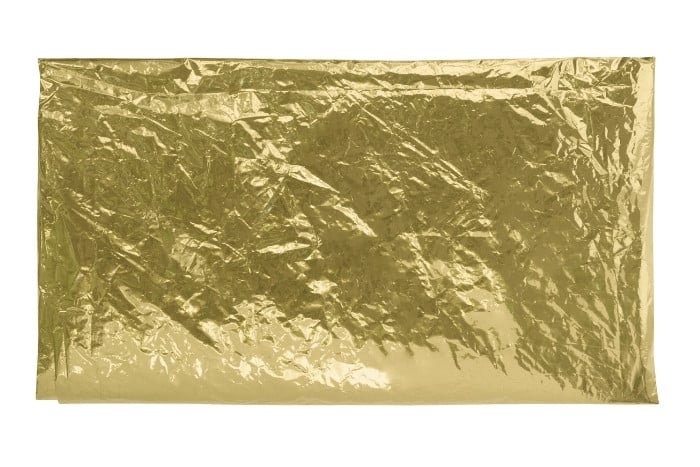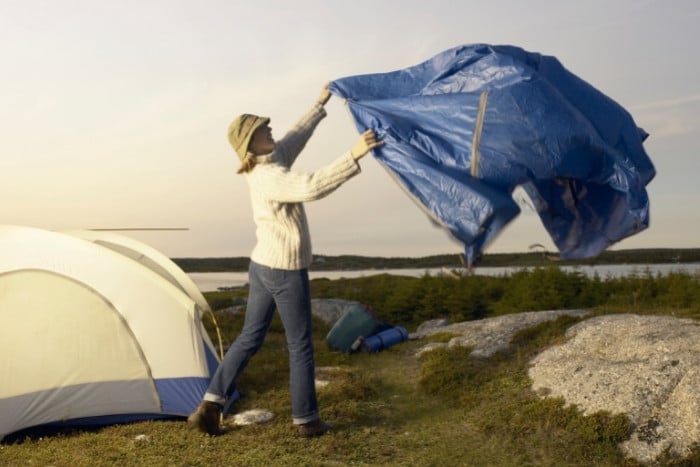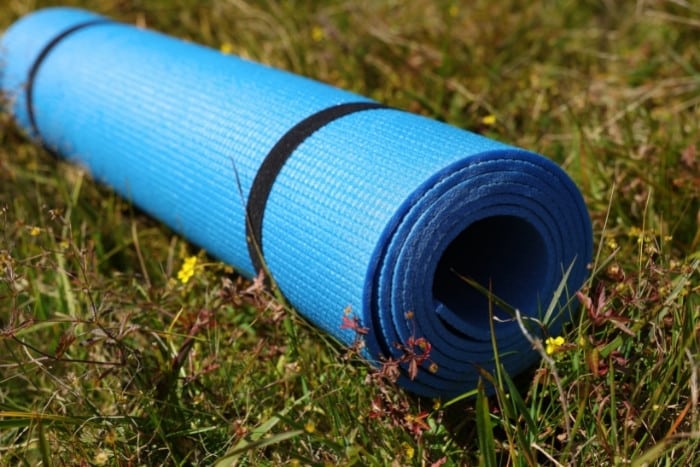You want to go camping in the middle of winter, but you aren’t sure how you’re going to be able to stay warm. Maybe you don’t have the right equipment for winter camping and want to know how to stay warm with your items. How can you possibly keep your tent warm while camping?
Keep your tent warm by insulating the walls and ceiling, improving ventilation, and using makeshift heaters like water bottles or hot rocks. Keep gear inside the tent and pair up with a tentmate to reduce the square footage that must be warmed. Avoid using camping stoves to heat the tent.
For more ideas on how to easily keep your tent warmer this winter, check out this list of tips and a warning.
What Are Some Easy Ways to Keep My Tent Warm?
For many people, winter camping is appealing but not at the expense of their overall comfort. Using a few handy tips and tricks, you need to know what to do to make your tent as warm as possible.
Fortunately, you can take many actions to secure a bit more warmth.
Before diving into all of the ways to keep your tent warm while camping, you should know a few things to avoid.
Many people invest in portable heaters or leave camp stoves running in the tent to facilitate some heat. This is an extremely dangerous situation that should be avoided.
Camping stoves can emit carbon monoxide. Not to mention, they’re also a huge fire hazard. Even portable heaters can be dangerous if you leave them running too long.
If you do decide that the extra warmth is worth the risk, try to only leave it running for a couple of hours at a time. This type of heater is usually designed for tents, so read the label.
Allow it to run as you fall asleep and again in the morning as you’re trying to warm up and get moving. Here are our top tips for some other ideas that are a bit safer to warm your tent.
1. Insulate the Tent
One of the first and easiest ways to keep your tent warm while camping is to insulate the tent’s walls.
You can do this even while keeping your backpack relatively light. Before you go on your camping trip, invest in some space blankets. Once you’ve pitched your tent, all you have to do is hang them.
Mylar blankets can be hung from both the walls and the ceiling of the tent to keep warm air from escaping inside your tent.
How can you secure them to the tent’s interior walls without poking holes to tie them in? It’s easier than you think.
All you need to do is bring a roll of duct tape with you. Hang the blanket from the ceiling and secure it with a piece or two of well-placed duct tape.

2. Avoid the Cold Ground
The cold ground is one of those unavoidable things that accompany winter camping. By keeping your body off the ground, you don’t allow it to conduct heat away from you and the inside of the tent.
Do everything you can to keep your tent from being pitched on frozen ground. It doesn’t have to mean a hefty investment.
Instead, you can gather up leaves and push them under where you’ll be setting up camp. Even a tarp can be an efficient means of insulating from the ground.
While it may be a bit more weight to carry, a few extra sleeping pads are well worth their weight. You likely already know that a sleeping pad insulates you from sleeping on the cold ground.
They can do even more if they’re properly positioned, though. Consider pitching your tent on an insulated pad if you want more protection than leaves can provide.
3. Ventilate Your Tent
Chances are that you don’t want to let in any cold air if you want your tent as warm as possible. For most people, it feels counterintuitive to ventilate your tent if you want it to stay cozy inside.
Unfortunately, you might do more harm than good if you trap all the water inside. There will be moisture inside your tent, even if it just comes from exhaling in your sleep.
Where does all that moisture go when you keep the tent tight? It’ll condense on the walls of the tent, your body, and anything else in the tent. If the temperature is low enough, it’ll even freeze.
This locks you inside a wet tent with a lot of ice on the walls, making you colder than ever. Do yourself a favor and open those vents to get you the ventilation necessary to eliminate condensation.
4. Use Makeshift Heaters
While lighting a fire inside your tent may not be a good idea, there are other options to put off a little bit of heat.
One way to transfer heat from outside around your campfire to the interior of your tent is to find some large rocks.
You likely won’t want to carry these to the campsite with you due to the weight in your pack. This means that you might encounter a situation where no suitable rocks are found at the campsite.
Once you have your rocks, put them in the campfire and allow them to heat up thoroughly. As you remove the rocks from the fire, wrap them in towels to prevent them from burning your hands.
This also helps to protect your tent from melting under their heat. Don’t heat the rocks too much, or you may still burn yourself or melt your tent.
When done properly, the rocks will transfer heat to the interior of your tent and keep you warm for hours to come.
5. Reposition Your Tent
Choosing the right campsite often sounds more like art than science, but there’s a lot of science to consider if you want a warmer tent.
Most people know that hot air rises, but they never think about the opposite of this statement: cold air sinks.
This means that pitching a tent in a depression or valley will feel way colder than if you pitch your tent higher.
Unfortunately, it’s not as easy as choosing the highest elevation place that you can. Campsites with high elevations often have the most wind and can be subject to more extreme weather conditions.
By selecting a campsite between the lowest and highest points, you’ll have a better chance of keeping the tent warm.
6. Add a Tarp
If you can’t resist the lure of the wilderness but only have a three-season tent, you may want to consider investing in a high-quality tarp.
You’ll find that tents designed for winter often have nice features that are meant to withstand harsh winter winds and insulate against the cold to some extent. Without one, you might be left shivering.
To simulate the extra snow-resistant material that four-season tents are often made of, you can simply secure a thick tarp over the outside of the tent.
This is a quick and easy way to modify a tent made for warmer weather.
Be aware that you will also need some tent stakes to secure that tarp in place, even in harsh weather conditions.
For extra warmth, consider tucking a thick blanket between the tent walls and the tarp to form a layer of insulation.

7. Heat Up a Water Bottle
A water bottle is small, but it can pack a powerful punch to frigid temperatures when used properly. Pack a hard plastic water bottle or two in your camping bag.
Not only can you get good use out of them during the day, but they can heat your tent at night. Boil some water on the campfire just before bedtime.
Pour it into your water bottle and wrap it in a towel so that you can comfortably handle the bottle. Most people like to tuck their water bottle in the sleeping bag, but this limits how well it can warm up the tent.
Instead, place it outside your sleeping bag but still close to you. You’ll likely be pleasantly surprised at how well the water bottle can heat your tent until you fall asleep.
8. Keep Gear in the Tent
If you want to keep your tent as warm as possible, ensure there isn’t much air for your body to heat. The best way to minimize the cold air in the tent is to have a smaller tent.
However, this isn’t realistic for everyone, so there are a few other things you can do to make it easier. One key way to minimize the square footage in the tent is to store your gear inside.
Your body won’t have to heat all the air if your giant pack, extra blankets, sleeping pads, and everything else you packed are taking up some of that precious real estate.
The extra gear in your tent will allow you to wear warmer clothes in the morning. Ensure you don’t take sharp objects from your cooking supplies into the tent.
One wrong move could cause a tear, letting cold air in, no matter how small. A leak like this will easily undo all the other preventive measures you took to stay warm.
9. Add More Body Heat
Are you camping with a group? Instead of each person sleeping in their tents, you may want to consider bunking with a friend.
You’ll have more luck with warming up the inside of a tent when there’s more than one body inside. The buddy system is good for staying safe on the campground.
The good news is that you won’t have to share a sleeping bag with them. While it may result in extra body heat, sharing a sleeping bag isn’t the most efficient way to warm up.
A bag that fits tighter to your body is best. You’ll sleep close by your buddy, but you’ll still have the privacy a personal sleeping bag affords.
10. Heat the Tent with Your Fire
While you never want to leave a fire burning at night while you turn in, you can utilize the heat that a fire radiates to warm your tent before you sleep. Position your tent close to the fire but not too close.
Use caution to ensure that your tent won’t catch fire due to proximity. You also don’t want it to melt due to excess heat. Make sure that no errant flames or embers are within a distance of the tent.
Then, pitch the tent just on the outskirts where it’s safe from the fire. This will allow the heat to transfer to your tent and warm it up before you settle in for the night.
11. Roll Out a Foam Pad
While it’s important to insulate your tent from the ground, make sure you leave enough space in your pack to still carry a foam pad.
A foam pad or other sleeping pad should have an R-value of 4 or higher when using it for winter camping.
This should be placed on the floor inside the tent to keep you insulated from the cold ground even further.
Be aware that inflatable pads can sometimes deflate in cold weather as the air inside takes up less space.
For those that can’t afford a sleeping pad or can’t spare any space in the pack, layering blankets on the bottom of the tent can be an effective substitute, though it isn’t the ideal situation.

12. Knock Off Snow
If you’re camping in the dead of winter, you’ll likely encounter snow and ice. One way to keep your tent warmer is to periodically venture outside to knock the snow and ice off the walls of the tent.
This works twofold: it exposes the tent to sunlight which warms it up while minimizing your proximity to the cold snow and ice. Bring a separate cloth or towel to wipe down the exterior walls of your tent.
Don’t use any objects that could potentially puncture the walls of your tent. A brush or a towel should be all you need to remove snow effectively.
Final Thoughts
Camping in the winter can be a lot of fun, but you must know how to do it smartly. Keeping the tent warm is just one of the many challenges you’ll face when you decide to camp in snow and ice.
Be sure to stick to safe and proven ways to stay warm. With a few of these tips and tricks up your sleeve, you’ll be able to slumber in peace and warmth.
